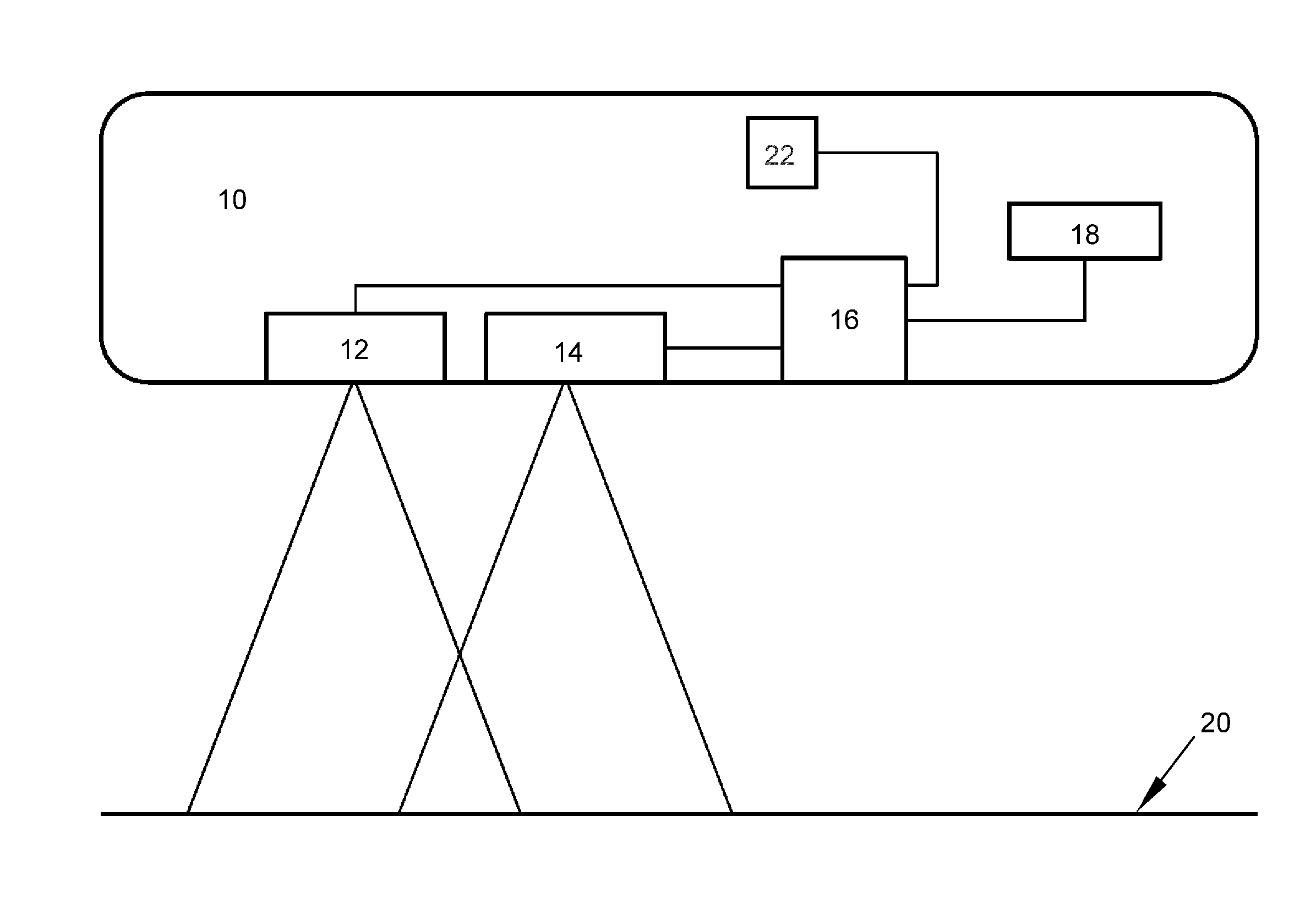Infrared aerial thermography for use in determining plant health
a technology of infrared aerial thermography and plant health, applied in the direction of optical radiation measurement, instruments, material analysis, etc., can solve the problems of not being able to accept cloud shadows in imagery, too late to take corrective action, and not being practicable for a commercial application
- Summary
- Abstract
- Description
- Claims
- Application Information
AI Technical Summary
Benefits of technology
Problems solved by technology
Method used
Image
Examples
Embodiment Construction
[0015]The present invention is generally applicable to imaging of plants utilizing energy (heat) emitted thereby. A particular aspect of the invention is based on a determination that by using certain microbolometer technology in a thermal imaging device, a trained thermographer can detect disease or other stress factors in vegetation before they become apparent to visual or near infrared cameras. While the invention is described as being suitable for monitoring plant health, other applications are foreseeable and therefore the present invention should not be limited to the described embodiments herein.
[0016]Preferred embodiments of the invention employ one or more high-resolution long-wave thermal imaging cameras 12 that can be mounted in an aircraft 10, as represented in FIG. 1, along with a digital camera 14, for example, a twenty-one megapixel digital camera, that can be used to provide a digital image for reference purposes. While the thermal imaging camera 12 and the digital c...
PUM
| Property | Measurement | Unit |
|---|---|---|
| time | aaaaa | aaaaa |
| wavelengths | aaaaa | aaaaa |
| wavelengths | aaaaa | aaaaa |
Abstract
Description
Claims
Application Information
 Login to View More
Login to View More - R&D
- Intellectual Property
- Life Sciences
- Materials
- Tech Scout
- Unparalleled Data Quality
- Higher Quality Content
- 60% Fewer Hallucinations
Browse by: Latest US Patents, China's latest patents, Technical Efficacy Thesaurus, Application Domain, Technology Topic, Popular Technical Reports.
© 2025 PatSnap. All rights reserved.Legal|Privacy policy|Modern Slavery Act Transparency Statement|Sitemap|About US| Contact US: help@patsnap.com


